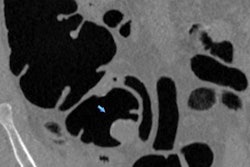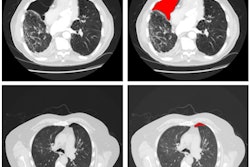Dear CT Insider,
When CT lung cancer screening got a positive review in 2013 from the U.S. Preventive Services Task Force (USPSTF), it helped pave the way for Medicare reimbursement of the test in high-risk smokers. Five years later, how has the implementation of CT lung cancer screening into clinical practice fared?
The USPSTF will most likely address that question as it opens a routine five-year review of CT lung cancer screening. What other questions can be expected? To find out, we talked to Dr. Ella Kazerooni from the University of Michigan for this edition's Insider Exclusive.
Seeking to optimize follow-up CT lung cancer screening, investigators from the Netherlands developed a risk model to predict which participants in the National Lung Screening Trial (NLST) did not develop lung cancer between the first and second years after baseline CT screening. Discover how well it performed compared with other models by clicking here.
In a separate analysis of data from the NLST, radiologists at Duke University Medical Center observed notable differences in the number of reported thyroid nodules and the actual prevalence of incidental thyroid nodules. They proposed using a larger size threshold when identifying which thyroid nodules need further workup.
Unlike in the case of lung cancer, payment for colorectal cancer screening with CT colonography is not covered by the U.S. Centers for Medicare and Medicaid Services. Learn why a group from the University of Wisconsin believes CT colonography reimbursement may be warranted for seniors in the Medicare program.
In recent weeks, a plethora of other studies from across the globe have emerged in the CT Community:
- Radiologists and forensic pathologists from the University Center of Legal Medicine Lausanne-Geneva explored the advantages of examining CT angiography scans for postmortem diagnosis.
- Lung nodule volume measurements on CT scans made with computer-aided diagnosis software predicted the recurrence of subsolid lung cancer more accurately than did standard nodule diameter measurements, according to a group from Japan.
- Researchers from Belgium found that organ-based tube-current modulation increased overall radiation dose and cancer mortality for chest CT.
- Authors of a comprehensive study evaluating radiation dose for coronary CT angiography exams in Saudi Arabia reported diagnostic reference levels comparable to those in Europe.
Back in the U.S., concerns over radiation exposure in children led a team out of New York to question the value of whole-body CT for pediatric patients who present to the emergency department with blunt trauma. To read about how the technique fared compared with selective head, chest, or abdominal-pelvic CT, click here.
Check out these stories and more of the latest CT news at AuntMinnie.com.




















